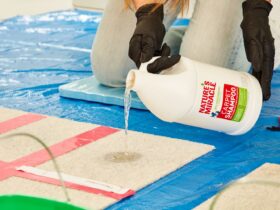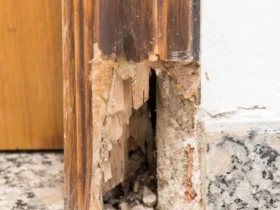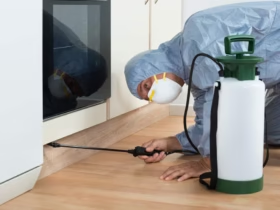Hiring the right team for mould remediation protects health, finishes, and insurance outcomes. Price alone cannot tell you whether methods and documentation will stand up to scrutiny. Use these questions to evaluate any mould removing company and to select a mould removal professional who will control moisture, contain spores, clean safely, and prove the space is ready to occupy.
1. What Is Driving Moisture Here?
Effective work starts with cause, not strain. Ask for a moisture map that pinpoints leaks, condensation paths, or ground ingress. A competent assessor explains readings in simple numbers, sets drying targets for each material, and gives you a plan to stop water before any cleaning starts. Without this step, mould returns.
2. How Will You Contain And Filter The Area?
Spores travel on air currents. Demand negative pressure containment with zipper access, sealed vents, and HEPA air scrubbers sized to the room. The team should outline how they will stage clean and dirty zones, bag waste inside containment, and protect unaffected rooms. Clear control prevents spread while work proceeds.
3. Which Materials Will You Remove Versus Restore?
Timber and concrete may typically be cleaned if sound, but porous materials like gypsum board and insulation frequently need to be removed. Ask for a room-by-room list that labels salvageable and unsalvageable materials. A mould removal professional should explain methods for each surface, including HEPA vacuuming, damp wiping, and stain-blocking primers after drying.
4. What PPE, Methods, And Chemicals Do You Use?
Safety and repeatability matter. Look for respirators, gloves, and eye protection matched to risk. Methods should begin with HEPA vacuuming, then controlled cleaning with appropriate detergents or biocides. The company should avoid dry scraping that aerosolises spores and should switch cloths and filters at defined intervals. You want process, not improvisation.
5. How Do You Dry, Monitor, And Verify?
Drying completes the job. Ask how many dehumidifiers and air movers will run, what the daily meter logs will show, and the target moisture content for each substrate. The mould removing company should present before-and-after readings and photographs. Finishes should only resume when numbers meet the target, not on a guess.
6. Will You Clean HVAC And Hidden Voids?
Air handlers can spread growth. Require filter upgrades, coil and pan cleaning, and, where justified, duct cleaning. Technicians should check voids behind skirting, inside toe-kicks, and around window reveals. If subfloors are wet, they should propose through-floor or under-carpet drying, with photos that prove access and results.
7. What Clearance Standard Do You Use?
Independent post-remediation verification protects you. Agree up front on visual criteria, moisture targets, and when air or surface samples are sensible. A credible mould removal professional welcomes third-party clearance and delivers a concise report: scope, containment design, methods, meter logs, and results. This record speeds insurer decisions.
8. How Will You Prevent Recurrence?
Remediation finishes with prevention. Expect advice on ventilation, vapour control, and maintenance routines. The team should propose detailing upgrades: new seals at wet joints, mould-resistant boards in high-risk rooms, and improved drainage or flashing outdoors. They should also brief occupants on simple daily habits that keep moisture low.
9. What Will The Quote And Timeline Cover?
Transparency avoids disputes. Insist on a line-item estimate for assessment, containment, removal, drying, rebuild, and testing. Ask for working hours, access needs, noise limits, and waste handling. A responsible mould removing company ties payment stages to milestones you can verify in writing.
10. How Will You Communicate During The Job?
Projects run smoothly when updates are predictable. Ask who your single point of contact will be, how often you will receive photos and meter logs, and how variations are approved. Require daily summaries that list progress, issues, and tomorrow’s plan. Clear communication keeps decisions timely and prevents small surprises from turning into delays.
Conclusion
Selecting specialists for mould remediation is a quality decision, not a gamble on the lowest price. When a provider can explain moisture sources, containment, removal methods, drying targets, and independent clearance, you gain safer air and stronger documentation. Use these questions to compare proposals, protect your budget, and prevent future mould damage with fixes that endure. Add one final check: schedule a walkthrough after clearance to plan rebuild details that prevent moisture traps from returning.
Contact BELFOR to arrange a site assessment with moisture mapping, documented containment and HEPA protocols, daily meter logs, and independent clearance testing, so your property returns to safe, dry, and verifiable condition.









